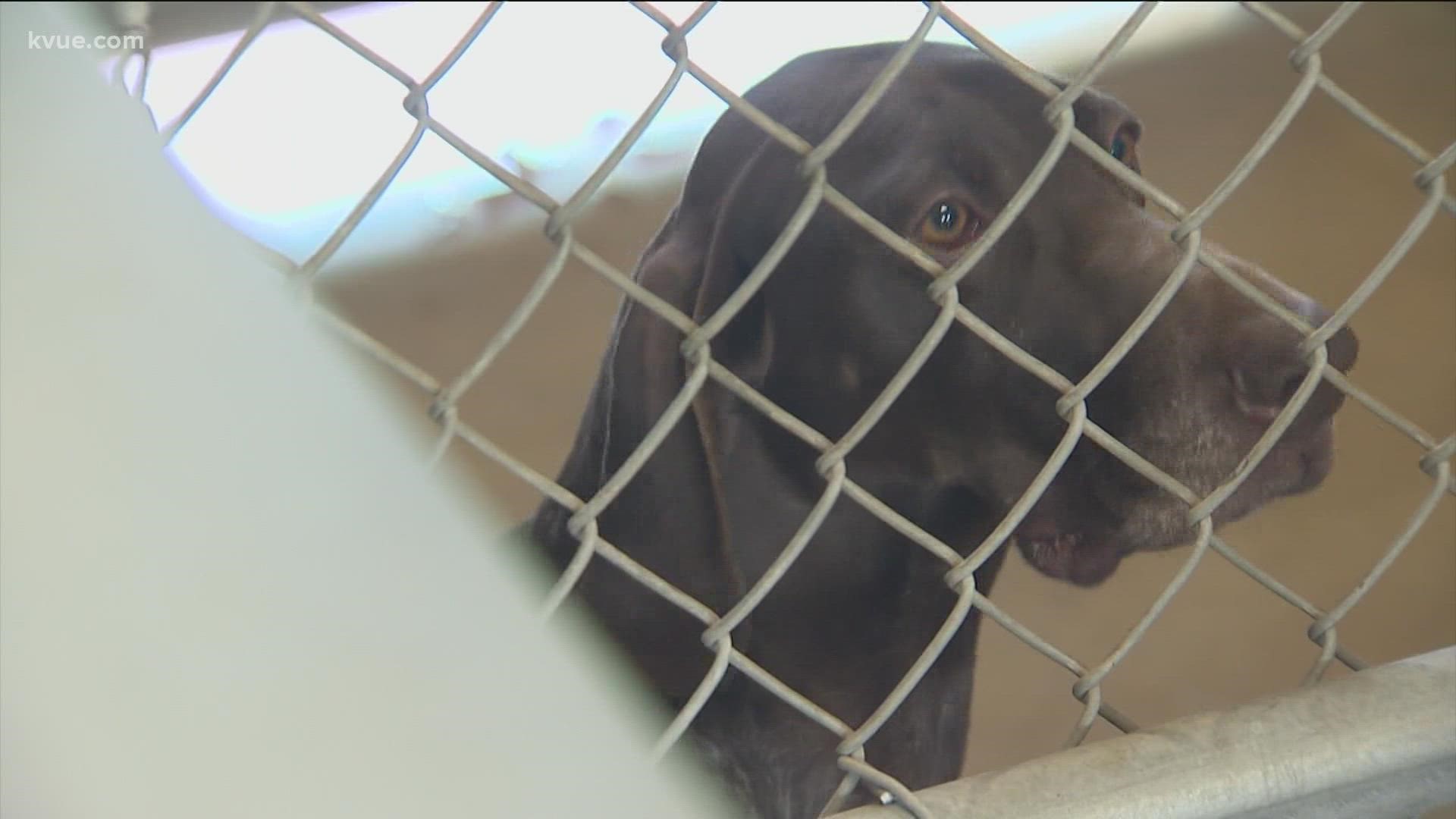SAN ANTONIO — Protecting America’s transportation sector requires all types of resources. But one of the most effective counterterrorism efforts comes with fur and four legs.
At Joint Base San Antonio (JBSA), the Transportation Security Administration (TSA) trains explosive detection and passenger screening canines that work in airports and mass transit environments across the country.
"These canines are extremely good at picking up and detecting explosives, and they're a force multiplier," said Zeb Polasek, the branch manager of the TSA’s Canine Training Center.
The dogs and trainers follow a strict routine and regimented training program to get ready to serve. Up to 350 dogs are trained for up to 16 weeks every year in Texas, TSA Spokesperson Patricia Mancha said.
"They're almost like a professional athlete in my mindset," Polasek said. "They have to have the right amount of sleep, they have to have the right food, they can't be overweight, they can't be underweight, they have to be physically able to be fit and they have to be on their game all the time."
Once the dogs complete training, they go to a home base airport where they live with a handler. Dogs trained in San Antonio can also go to work for various law enforcement agencies.
Training in action
It costs $13 million a year to run the training center at JBSA, not including payroll, Polasek said.
Training simulations are set up to prepare for real-world searches. One of the lessons set up in a warehouse acts as an airport cargo area.
The KVUE team observed one of the dogs, Chico, searching piles of boxes high and low, looking for the one single box with explosive scent. He found it quickly at the back of the warehouse after thoroughly sniffing through the boxes, then giving a “passive response” when he detected a potential threat.
His trainer rewarded him with a rubber chew toy.
“It's essentially a game to them,” Polasek said. “You have a highly-trained asset that is well above, in my opinion, better than any equipment out there.”
Another warehouse features an airport terminal simulation, where people hired to act as passengers help to get the dogs familiar with working with flyers.
Ribanc, another TSA dog in training, cut back and forth between the passengers as they walked down the middle of the terminal, smelling them and their luggage. When she detected a possible threat, Ribanc yanked her handler toward the passenger.
The dogs and trainers go through the different simulations several times throughout the weeks-long training process.
About the dogs
Untrained, the dogs cost a minimum of $7,000, Polasek said. They can cost up to $13,000.
The TSA uses seven different breeds, including Labrador retrievers, German short-hair pointers, Vizslas, German shepherds and Belgian Malinois, Mancha said.
The dogs spend at least four hours a day focused on training exercises and then spend the night in kennels at JBSA. The base has seven kennels that can accommodate up to 50 dogs each.
The TSA has more than 1,000 working dog teams across the country and, every year, training center staff visits the teams for an annual evaluation.
"This isn't one of those jobs where you graduate and you're good to go. We're going to see you every year, and we're going to test you to make sure you've maintained those standards through the lifecycle of that dog," Polasek said.
Dogs can age out after at least eight years and some last longer, Polasek said. Then dogs can be transitioned to a family house pet if the handler chooses.
But when they are working dogs, they have to be kept active.
"These are not house pets," Polasek said. "They will find something to do if you don't give them something to do."
When working in airports, the dogs wear harnesses warning flyers not to pet them because too much affection could be too much of a distraction for the working dogs.
"It’s hard for the handlers because you can see folks that really love dogs and you can tell there's that connection with security, and we want to make that connection," Polasek said. "But it will damage us over time because the dog then really just gravitates toward that and stops focusing on its job at hand, which is keeping the public safe and searching for explosives."
Just like us, these hard-working dogs need balance.
“It’s work-life balance because that is critical to success, just like humans. Our dogs have to have that balance,” Polasek said.
PEOPLE ARE ALSO READING:
- 20 months after Austin protests, grand jury considering charges against up to 18 APD officers
- Travis County domestic violence survivors may wait weeks for a protective order because of backlog
- Austin Water lifts citywide boil water notice
- Report: Developers ready to break ground on 2,200-home community in Hays County

